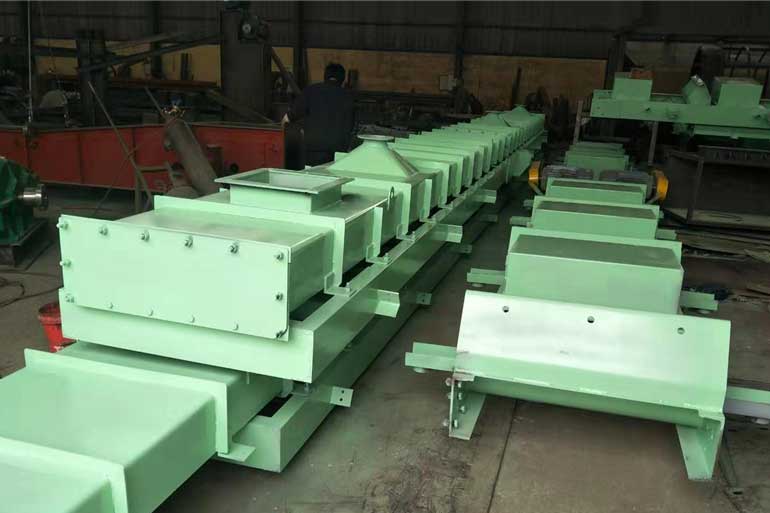Long-distance vibrating conveyors are used in mining, metallurgy, building materials, coal, chemical industry, food, medicine, and other industries to transport various powdery, granular, blocky, and mixtures of materials with a temperature below 300 ° C. It is a general-purpose High-temperature material vibration conveying equipment with strong performance and advanced structure. For example the transportation of raw materials, intermediate semi-finished products, and finished products in the cement industry, the transportation of solid raw materials and semi-finished products in the chemical industry, the transportation of ores, concentrates, and tailings in the mining industry, etc.

Read More: Vibrating Conveyor – Applications, 4 Types
Top 6 daily maintenance
- Since the vibrating conveyor is a vibrating conveyor, the vibration may cause the loosening of the connecting parts. Although an elastic washer is added during installation, in order to avoid loosening, the operator should check frequently, and fasten it in time if it is found to be loose.
- The moving parts, such as bearing housings and tie rod bearing housings, have grease fittings on the outside, and calcium-based or lithium-based grease should be injected in each shift to ensure lubrication and make the moving parts work normally.
- Once the operator finds an abnormality during work, he should stop the machine in time to check and eliminate the fault.
- Frequently check whether the bearing is damaged, and replace it with a new bearing of the same type in time if any damage is found.
- There is a safety protective cover at the transmission place of the large and small V pulleys, and the protective cover should be installed in time after maintenance to prevent danger.
- The vibrating structure of the tie rod, due to the reciprocating swing movement during work, the staff stay away from this place during work and do not touch it with hands to avoid personal accidents.
Read More: What is a Conveyor